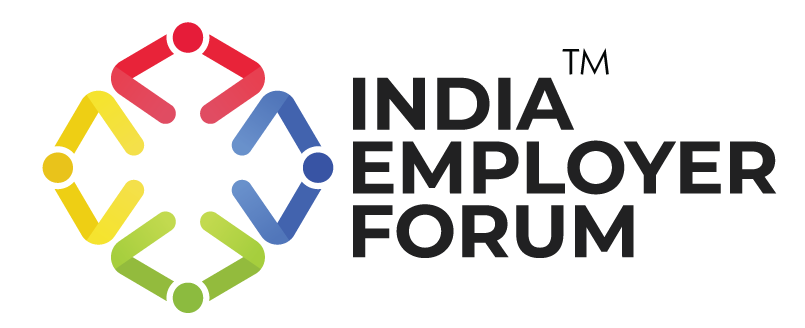India is witnessing a significant surge in employment opportunities in the financial year 2025‑26, fueled by sector-specific growth, the rise of new employment hubs, and supportive government policies and infrastructure.
This expanding job market presents a valuable opportunity for both job seekers and employers. For job seekers, it offers the chance to explore diverse career options near their location. For employers, it provides an advantage in acquiring cost-effective talent to ensure sustainable business growth.
Key Workforce Trends and Growth Drivers
India’s workforce grew from 47.5 crore to 64.33 crore between 2017‑18 and 2023‑24, reflecting a steady increase in job opportunities over the seven years.
This upward trajectory is expected to continue in FY 2025‑26. According to the TeamLease Employment Outlook Report H2 FY26, India anticipates a 4.4% net increase in job creation in the second half of the financial year, up from approximately 2.8% in the first half. Around 56% of employers plan to expand their workforce, while 27% aim for stability, and 17% prefer a rational evaluation before expansion.
This employment growth is driven by several factors, including sector-specific development, job creation beyond traditional geographies, and supportive government policies and infrastructure.
Sector-specific Growth and Emerging Job Hubs
Industries such as logistics, e‑commerce, retail, tech startups, manufacturing, and electric vehicle (EV) production are witnessing significant growth by leveraging advanced technologies and creating diverse job opportunities in India. The logistics sector recorded a net employment growth of 14.2% between October 2024 and March 2025, driven by increasing demand in warehousing and transportation. E‑commerce and tech startups experienced approximately 8.2% employment growth, while the retail sector is projected to see a 12% increase in workforce. Similarly, the EV manufacturing industry is expected to achieve a 12.1% growth in employment, reflecting the rising demand for skilled talent.
Tier‑2 and Tier‑3 cities are emerging as new employment hotspots, showing strong year-on-year growth of 21% in September 2025, compared with 14% in metro cities. Cities like Bhubaneshwar (41%), Udaipur (44%), Coimbatore (24.6%), and Gurugram (22.6%) have witnessed significant hiring activity, indicating a shift of opportunities beyond traditional metropolitan cities.
Government Policy and Technology Integration
Government initiatives play a crucial role in sustaining this momentum. The Employment Linked Incentive (ELI) Scheme, with a budget of approximately ₹1 trillion, along with the Production Linked Incentive (PLI) Scheme, promotes job creation across sectors, with a special focus on manufacturing and logistics. The National Logistics Policy further boosts hiring by enhancing multimodal transport and reducing logistics costs.
In addition, many sectors are integrating AI/ML, IoT, and automation into their operations, creating demand for new roles that require diverse skills beyond the traditional ones. These developments highlight the growing importance of technical proficiency in the evolving world of work.
Insights for Job Seekers
Target High-Growth Sectors
With logistics, e‑commerce, retail, and EV manufacturing leading job creation in India, candidates have the opportunity to explore careers aligned with their interests and develop relevant skills. In logistics, e‑commerce, and retail, in-demand positions include Supply Chain Manager, Warehousing Manager, Digital Marketing Specialist, Delivery Executive, and Customer Support Executive. Within the EV industry, high-demand roles include Battery Design & R&D Engineer, Manufacturing/Production Engineer, Embedded Systems Engineer, and Service Technician.
Explore Opportunities Beyond Metros
Tier‑2 and Tier‑3 cities are emerging as key employment hubs as companies expand beyond traditional metros. Job seekers, particularly locals, can access high-growth career opportunities in cities like Coimbatore, Bhubaneswar, and Udaipur while benefiting from lower living costs and a better work-life balance.
Develop In-Demand Technical Skills
The adoption of AI, IoT, and automation across industries signals a shift toward digital-first roles. Job seekers should prioritise technology upskilling — from basic data analytics to proficiency with AI tools such as ChatGPT, Perplexity, Gemini, and Copilot — to remain competitive in India’s evolving job market.
Leverage the Gig Work Opportunities
With flexible and gig-based roles gaining prominence, especially in e-commerce and logistics, job seekers can explore short-term or project-based assignments as pathways to long-term employment. This approach offers greater flexibility, income diversification, and exposure to emerging business models.
Network with Purpose
As regional job markets evolve, professional networking — both online and offline — plays a critical role in career growth. Job seekers are encouraged to connect with recruiters and industry experts on platforms like LinkedIn to stay updated on industry trends, skill requirements, and location-specific job openings.
Insights for Employers
Harness Local Talent Pools
Tier‑2 and Tier‑3 cities such as Coimbatore, Udaipur, Visakhapatnam, and Jaipur are experiencing faster hiring growth. Companies can capitalise on this trend by leveraging the local, untapped talent pool to expand operations. This approach also helps reduce hiring costs and minimise attrition rates, ensuring a more stable workforce planning.
Invest in Workforce Training and Upskilling
As AI, IoT, and automation transform job functions across industries, employers should invest in workforce training and upskilling to enhance productivity, retain top talent, and align employee skills with emerging business requirements.
Utilise Government Schemes
Employers can benefit from government initiatives such as the Employment Linked Incentive (ELI) Scheme, Production Linked Incentive (PLI) Scheme, Startup India Scheme, and Make in India Initiative. These programs support workforce expansion, encourage entrepreneurship, and boost domestic production, contributing to sustainable organisational growth and human capital development.
Adopt Flexible and Hybrid Workforce Models
The rapid expansion of e-commerce, food delivery, and ride-hailing services has increased the demand for a flexible workforce. Employers can implement flexible and hybrid workforce models to meet seasonal or short-term project needs, reduce human capital expenditure, and enhance organisational agility.
Implement Data-Driven Recruitment
A data-driven approach to recruitment enables employers to match essential skills with job profiles accurately, forecast workforce requirements, and hire talent that aligns with organisational objectives. This ensures strategic workforce planning and higher productivity.
Build a Strong Employer Brand in Emerging Markets
To attract talent from emerging job markets, particularly in non-metro cities, companies should focus on building a strong employer brand. This can be achieved by promoting career growth opportunities, conducting skill development initiatives, and fostering a positive workplace culture.
India’s job market in FY 2025‑26 presents a unique opportunity for both job seekers and employers. With rapidly evolving sectors like logistics, e-commerce, retail, and EV manufacturing and Tier‑2/3 cities emerging as new talent hubs, the employment landscape is undergoing significant growth.
Job seekers can leverage this opportunity by upskilling in the latest technologies and exploring job vacancies beyond metros. Employers can benefit by harnessing the untapped local talent pool, government schemes, and embracing flexible workforce models. By aligning skills, technology adoption, and workforce planning, both talents and organisations can contribute to the country’s economic development.






